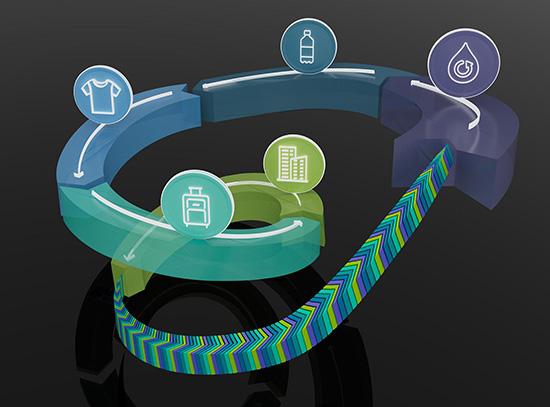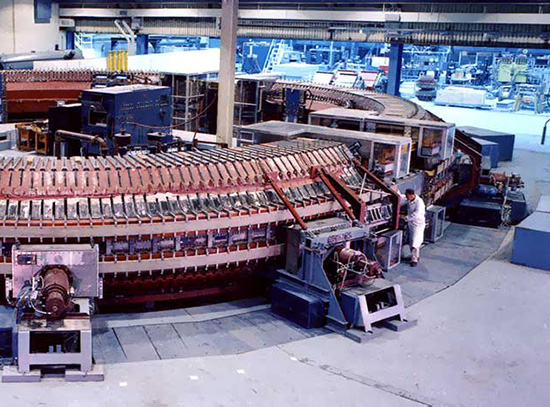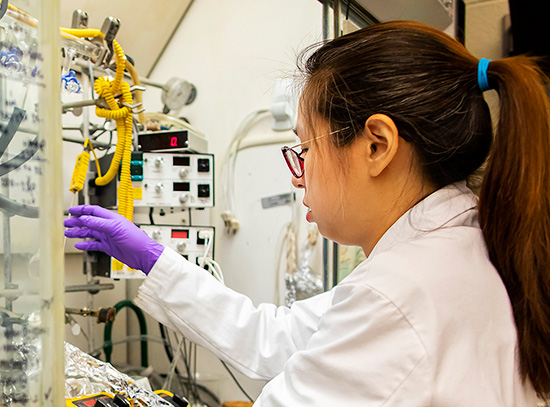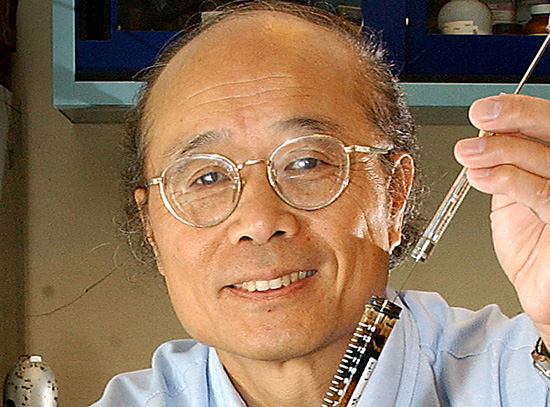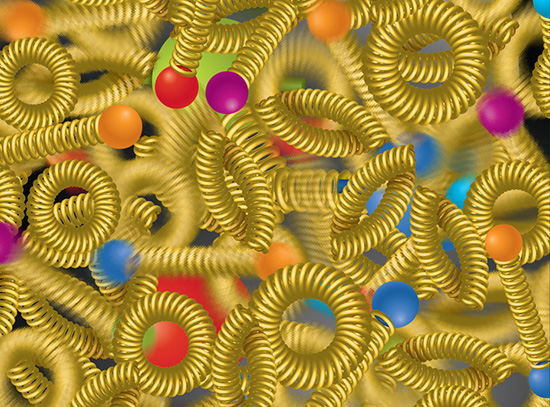Women @ Energy: Lynne Ecker
October 29, 2014
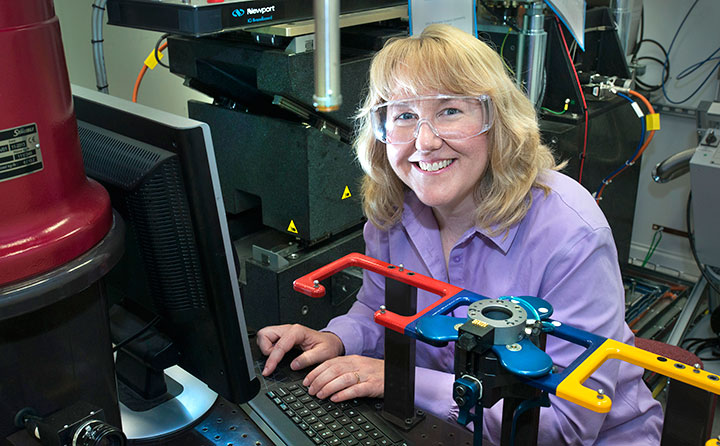 enlarge
enlarge
Lynne Ecker works on materials in radiation environments at the National Synchrotron Light Source (NSLS) and NSLS-II at the U.S. Department of Energy's Brookhaven National Laboratory.
The following profile was published by the Department of Energy's Office of Economic Impact and Diversity for the Women @ Energy series, which showcases women who are helping change the world, ensuring America’s security and prosperity through transformative science and technology solutions. Meet the other scientists profiled in the Women @ Energy series.
Lynne Ecker works on materials in radiation environments at the National Synchrotron Light Source (NSLS) and NSLS-II at the U.S. Department of Energy's Brookhaven National Laboratory. She won a $1 million award from the Office of Nuclear Energy last year for a robot to analyze nuclear reactor pressure vessel samples. Ecker earned a bachelor's degree in physics, a master's degree in mechanical engineering, and a Ph.D. in solid-state science and technology, all from Syracuse University.
1) What inspired you to work in STEM?
I still remember the first lecture I heard on physics. It was in elementary school when I was in the sixth grade. It was on simple machines (pulleys, levers, incline planes) and I remember being impressed that with just a few simple formulas, you could know so much about so many systems. It seemed very powerful and efficient because there wasn’t much to memorize, but fun because each system required applying the formulas a little differently. You could say “it was love at first sight.”
2) What excites you about your work at the Energy Department?
I find it very motivating to know that what I work on everyday will impact my field—nuclear energy systems—and consequently the nation’s energy supply and natural environment. We are designing a new synchrotron beamline for the National Synchrotron Light Source-II for real time and in-situ studies of Materials in a Radiation Environment (MRE) to study radioactive materials and radiation effects. It will provide synchrotron x-rays techniques for investigating materials of interest to national security, advanced structural materials and fuels for fission and fusion energy systems, radioactive materials, and fabrication of materials using ion implantation. It is very exciting to be able to work with the university and industrial communities to provide an important new tool that will be used to advance these fields.
3) How can our country engage more women, girls, and other underrepresented groups in STEM?
Women role models are very important both for providing direct mentoring and opening up possible career paths. When choosing a field, I think everyone looks at the opportunities for career advancement. Women role models, even if you don’t work with them closely, make more career choices seem obtainable.
4) Do you have tips you'd recommend for someone looking to enter your field of work?
The Department of Energy internship programs like the Science Undergraduate Laboratory Internship program are a great way to learn more about fields that interest you and science careers. Be open to trying different research areas—the skills that you learn are easily translatable, broaden your expertise and make you a better, more thorough scientist.
5) When you have free time, what are your hobbies?
I love taking my sons (ages 5 and 7) to the beach.
2014-5269 | INT/EXT | Newsroom




